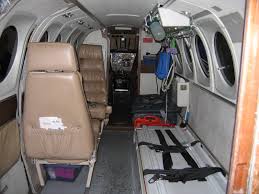Understanding what constitutes an air ambulance according to Medicare is necessary. The fact ensures that you get into an aircraft that is equipped enough to take care of you or your loved ones. According to “Medicare Benefit Policy Manual,” the air ambulance needs to be equipped and designed such that it can be of use during emergency and nonemergency situations. It is also essential that a US air ambulance or worldwide air ambulance service complies with the State as well as local laws.
Air Ambulance Equipment Requirements According to Medicare
The medical flight must be equipped with linens, stretcher, medical supplies for an emergency, oxygen supplies and equipment, and other vital emergency lifesavers or life-sustenance equipment. It must also contain support equipment such as neck and back boards, inflatable arm and leg splints. The air ambulance must be complete with necessary signage that signifies it is a medical flight. Telecommunication equipment must be present in accordance with the State or local law. In other words, there should be one wireless telephone or two-way voice radio at the minimum.
Adequate Staffing of Air Ambulance According to Medicare
If a basic life support air ambulance is chosen, it must have two people at the minimum with at least one of them being a certified EMT or emergency medical technician. The certification must have been granted by the state or local authority. The person must have legal authorization to operate lifesaving equipment onboard the medical flight. Any advanced life support air ambulance too must be staffed with two people with at least one being an EMT paramedic or EMT intermediate.
Statement of Compliance to be Furnished by Air Ambulance Service Provider
A statement that signifies compliance to norms laid down by Medicare is necessary for reimbursements. Medicare might ask the air ambulance service provider to furnish these at its discretion, although the information might not be asked for with every flight. The documentary evidence must contain letters from State or local authorities such as certificates, permits and licenses to name a few. Although checking for compliance is not a beneficiary’s responsibility, keeping oneself informed always helps.


